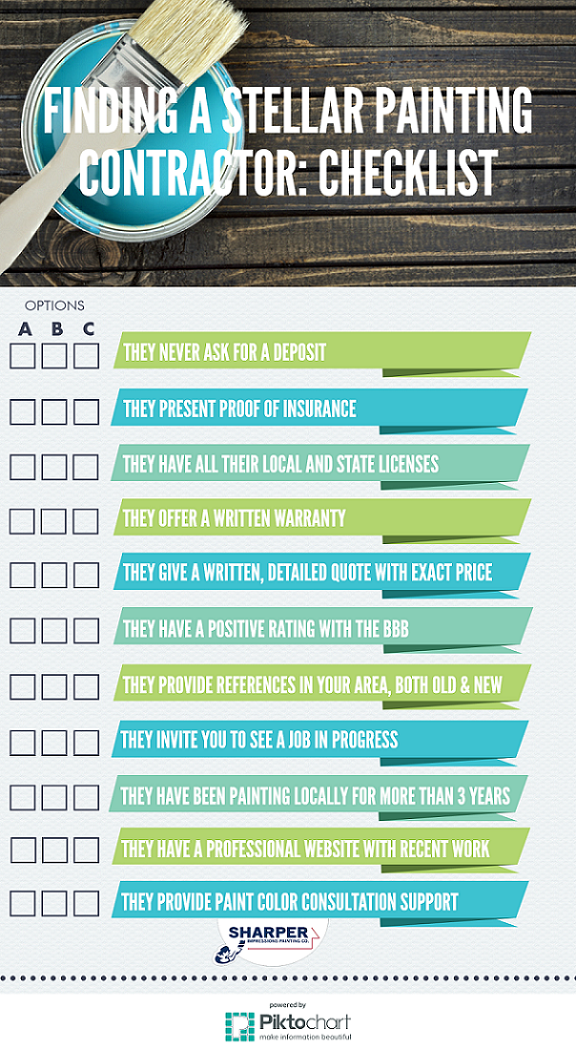Find Out Exactly How Seasonal Factors Influence Commercial Outside Painting Success And Discover The Very Best Times To Make Sure Enduring Results For Your Job
Find Out Exactly How Seasonal Factors Influence Commercial Outside Painting Success And Discover The Very Best Times To Make Sure Enduring Results For Your Job
Blog Article
Content Writer-Burnham Rosendal
When you're planning a business external paint project, seasonal variables can make or damage your outcomes. You'll want to think about just how temperature and moisture impact paint application and drying out times. Picking the right period can guarantee your paint sticks appropriately and lasts longer. Yet which periods are absolutely the best for this sort of work? Let's explore the crucial elements that can impact your task's success.
The Impact of Temperature on Paint Application
When you're planning an industrial exterior paint job, the temperature can considerably impact how well the paint adheres and dries.
Ideally, you want to repaint when temperatures range between 50 ° F and 85 ° F. If it's too cold, the paint might not heal properly, resulting in concerns like peeling off or fracturing.
On the other hand, if it's also warm, the paint can dry out also swiftly, stopping proper bond and resulting in an irregular surface.
You must additionally take into consideration the moment of day; early morning or late afternoon supplies cooler temperatures, which can be more desirable.
Constantly examine the manufacturer's referrals for the certain paint you're utilizing, as they commonly provide support on the optimal temperature range for ideal results.
Humidity and Its Effect on Drying Times
Temperature level isn't the only ecological factor that affects your commercial external paint job; moisture plays a substantial role as well. helpful resources can slow down drying times considerably, affecting the overall high quality of your paint task.
When the air is filled with moisture, the paint takes longer to treat, which can bring about issues like bad attachment and a higher danger of mold growth. If you're repainting on a specifically damp day, be planned for extended wait times between layers.
It's important to keep track of neighborhood weather and strategy as necessary. Preferably, go for humidity degrees in between 40% and 70% for ideal drying out.
Maintaining these consider mind ensures your project stays on track and delivers a long-term coating.
Best Seasons for Commercial Outside Painting Projects
What's the best time of year for your commercial outside paint tasks?
Springtime and very early autumn are generally your best bets. During these seasons, temperature levels are moderate, and moisture levels are frequently lower, producing suitable conditions for paint application and drying out.
Stay have a peek at this site of summer season's intense heat, which can trigger paint to completely dry as well promptly, causing poor bond and finish. In a similar way, winter's cold temperature levels can impede correct drying and curing, risking the long life of your paint task.
Go for residential interior painting texas with temperatures between 50 ° F and 85 ° F for ideal results. Keep in mind to examine the neighborhood weather report for rainfall, as wet problems can destroy your project.
Planning around these factors guarantees your painting job runs smoothly and lasts much longer.
Final thought
In conclusion, preparing your industrial exterior painting tasks around seasonal factors to consider can make a considerable difference in the outcome. By scheduling work during the suitable temperature levels and humidity degrees, you'll ensure much better adhesion and drying times. Keep in https://residential-painters-near00998.livebloggs.com/40777113/explore-one-of-the-most-current-methods-and-advancements-in-residential-painting to watch on regional weather report and pick the correct time of year-- spring and very early fall are your best choices. Taking these steps will certainly assist you attain a resilient and expert coating that lasts.
